Blues is a very diverse and interesting genre of music. Two compositions can be very different from each other - and you will not think that this is the same direction. It is performed by street musicians and world famous stars, like Gary Moore. In this article we will look at how to play the blues on the guitar.
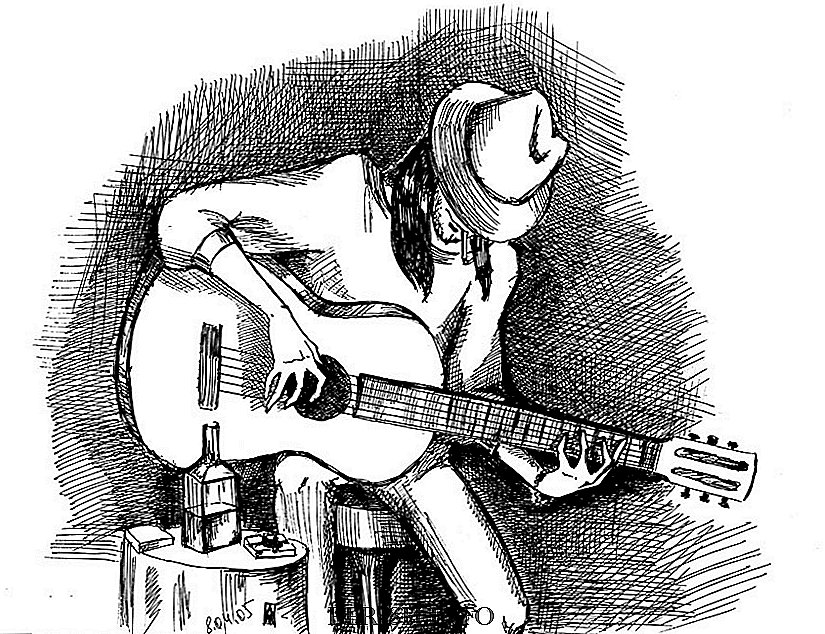
Fingers or slide?
A slide is a special tube of metal, glass or ceramic, which is put on the finger and used to clamp the strings. When the string touches not a soft pad of a finger, but a metal surface, the sound of the guitar changes beyond recognition. Since the birth of the genre, the blues and slide go hand in hand.
But there are no hard canons here. Like to play "hands" - please. Want to get a vibratto vibrant and authentic sound - try to slide. It is not even necessary to buy it - take a glass bottle or, for example, a folding knife. This will be enough to understand whether you like this sound or not.
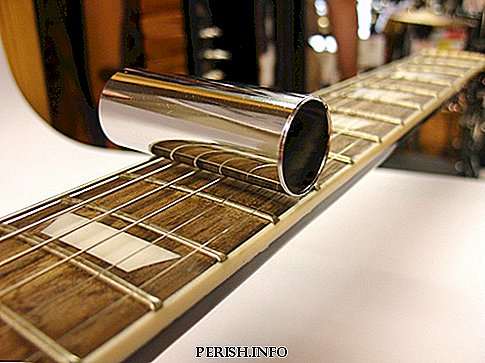
The sound of a professional slide will not be better than that of a bottle. The difference is that he doesn't have to be held all over. The tube is put on only one finger, and the others will be free. Thus, guitarists can combine the slide technique of the game with the classical one.
How complete and surround the sound of a guitar can be understood if you buy a twelve-string guitar.
Features 12-string:
- reinforced case like western or jumbo;
- wide fingerboard;
- metal strings placed in pairs - thick with a winding and thin without a winding. The strings are tuned in unison, however, starting from the third pair, the thin string is always tuned an octave higher.
Where to buy a 12 string guitar?
For a musician who is fluent in playing a six-string guitar, the desire to buy a 12-string guitar in Moscow or in another region of Russia is quite understandable.
When choosing a store where to buy a 12-string guitar, take a look at specialty stores offering not only cheap instruments. Inexpensive twelve-string guitar - great temptationHowever, it should be remembered that 12 strings cause a powerful load on the body of the guitar, so one of the main parameters of the twelve-string is its strength.
Read more ...
Preparing for the game
This section of the manual is for those who want to learn how to play the blues on an electric guitar. In the case of acoustics, no preparation is necessary - take it and play. But here it is possible to twist the equalizer or add a couple of pedals to the circuit, having received the desired sound.
The first and most important: forget about distortion. Bluesmen use either clear or slightly loaded sound, that is, a light overdrive. A large level of gain will give a lot of disgusting noise and repeatedly increase the rattle on the braided strings. And he compresses the stream, cutting off all the dynamics of the blues sound.
There are special blues pedals, such as the Boss Blues Driver. You can not find this - use the usual overdrive. It is important not to overdo it. In some compositions, the Wah-Wah effect will perform well. But at the stage of learning it is better not to touch it.
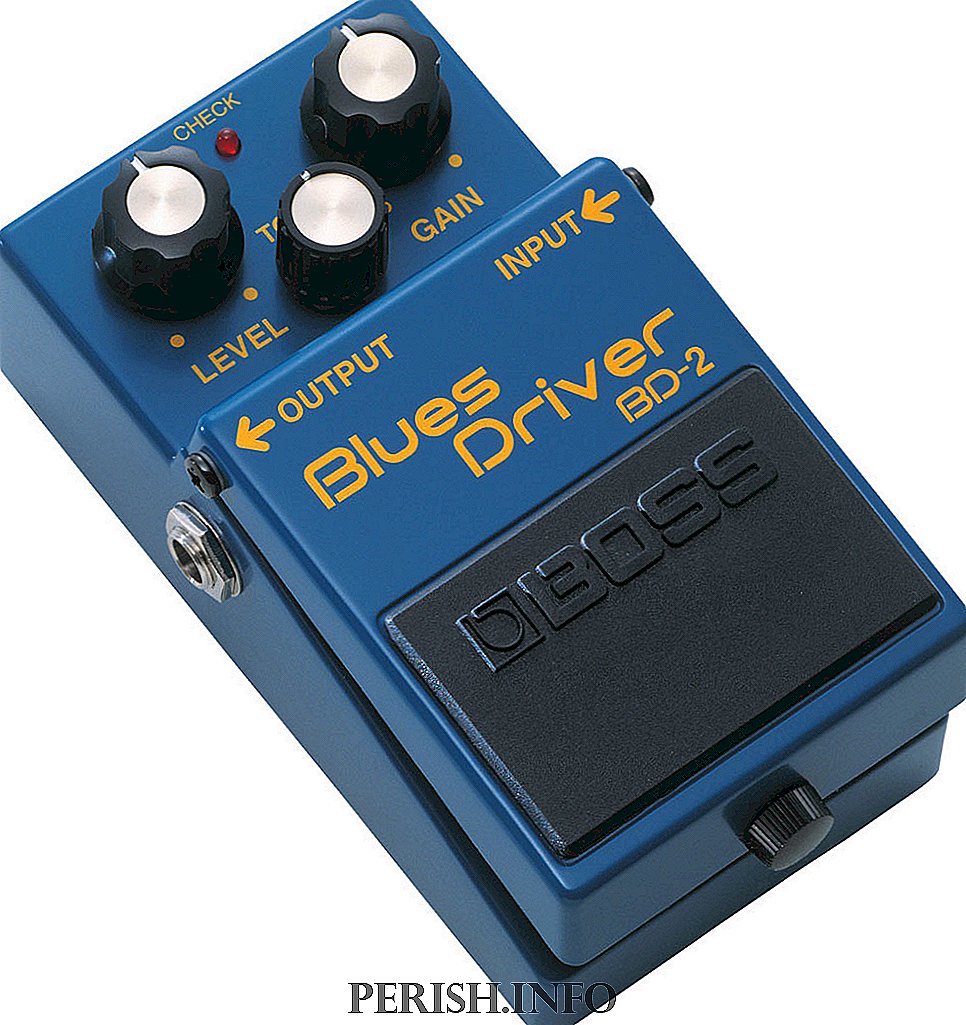
The second tip: do not wind a lot of some frequencies in the equalizer. Instead of raising the middle, better lower bass and top level. This simple trick gives you a more pleasant and natural sound.
Blues pentatonic
The most interesting thing about blues is improvisation. Without it, neither you will compose your own melody, nor will you embellish someone else's. And to improvise, you need to find out what notes you have at your disposal.
The basis of the blues scale is taken minor pentatonic. Between the 3rd and 4th steps, one more note is added. It is she who helps to create the most characteristic sound. Over decades of trial and error, bluesmen have discovered the 5 most convenient positions (boxing) for Game.
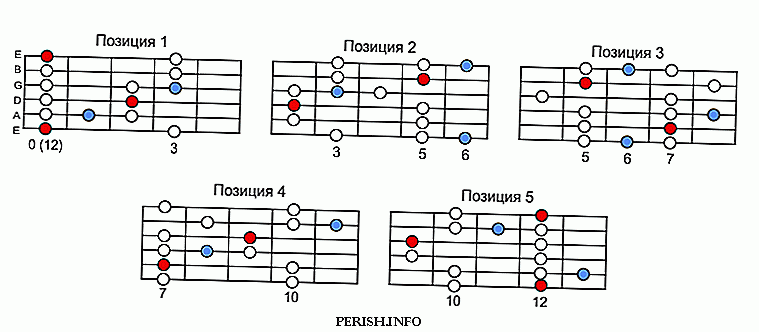
The red dot is tonic, the main note from which the melody is built. Blue is that extra sound. Choose any fret on the guitar and try alternately playing all the notes in each of the positions. Even without additional techniques, you will immediately feel this special character of the melodies.
Try to learn all the boxes so that your fingers can easily run along the strings “on the machine”. If you constantly think what to hold down - there can be no question of improvisation.
Build melodies
When you get used to the pentatonic fingering, you can begin to improvise. To get started, try to play the same range, but with different rhythmic patterns. Combine the eighth and quad. Change direction, "jump" after 1-2 steps of the scale, pause. After some time, your hands will remember what reception sounds good, and which one - so-so.
Don't forget the metronome. Rhythm in music is very important. He should not be forgotten either during the performance of slow, "sticky" compositions, much less in swinging riffs. Perhaps it will be unusual and difficult for you to study under the metronome. But without this, a good sense of rhythm cannot be developed.
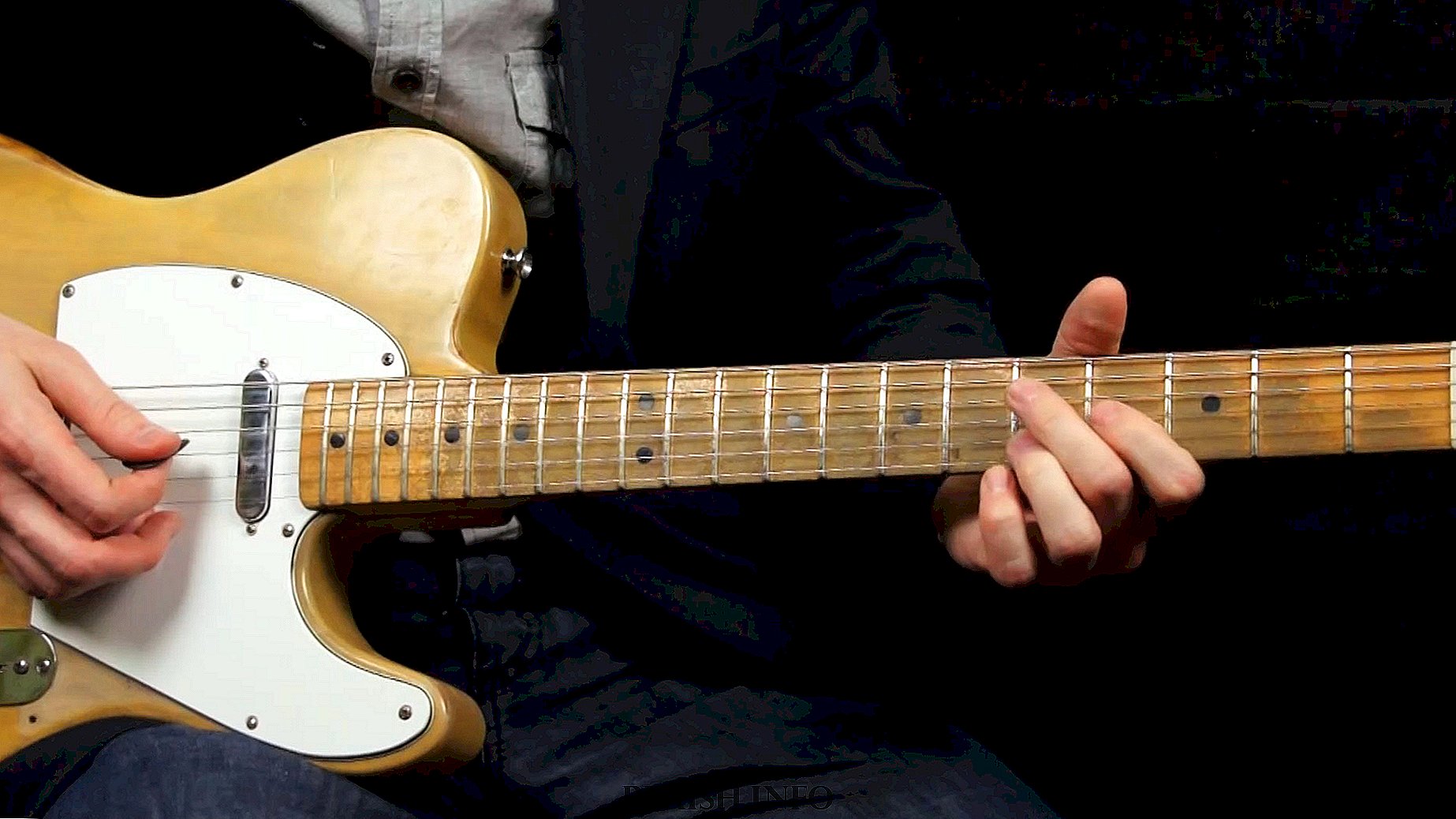
Try to play in different positions. Nobody forbids changing them during the game. The sound of riffs in different boxes will vary slightly. Experiment more - and get a lot of interesting melodies in your piggy bank.
Bend, slide and vibratto
Without these three techniques, no blues composition can do. It is they who enliven the melody, make it bright and unique.
Slide - the easiest reception. It sounds especially impressive when playing with a slide (such is the terminological tautology). Actually, the whole technique of the game comes down to the fact that you never pick up the phone from the strings, but lead along their surface. The sound is always there, even when changing the position of the hand.
If you play with your fingers - the essence remains the same. For example, you clamp the string on the 5th fret, extract the sound, and then move out on the 7th. It is not necessary to let go of the finger. The speed depends on the context: sometimes you need to move quickly, sometimes smoothly.
Next important blues technique band. This change in pitch without changing the mode. You press the string, and then lead it along the fretsal. It stretches and sounds higher. Usually bends are drawn by tone or half tone. Make it easy. It is difficult to learn how to tighten the strings so that the resulting sound belongs to your scale.

This is a very important point. If you make a band of just a quarter of a tone, it will not fit into the melody and cause discord. If you pull the string half a tone, but you get a note that is not included in your pentatonic scale - again there is dissonance.
For example: between the 3rd and 4th steps of your scale, the distance is only half a tone (1 guitar fret). You can hold the string on the 7th fret, and then pull it until the sound is the same as if you clamped it on the 8th fret. You can pull even higher - up to the 9th fret - and get the 5th pentatonic stage.
Another universal trick - vibratto. When you play a long note (for example, the 4th among an array of 8s), you can give it a special color, to attract attention. If you know how to make a bend, it will be easy to master vibratto. Simply increase and decrease the tension to get a characteristic jitter. You can change the height quite a bit, and you can achieve an amplitude of 2 tones. What and when sounds better - you can understand only by experimenting.
This little material will help you get to the start. And then - the only thing to practice. Listen to different performers, watch street musicians play, try to make your own melodies, add chords to the composition, actively use bends and slides. The best way to learn how to play the blues is to play it.
Article Sponsor.
Where and how to get quality, 12 string guitars? More details can be found here.

Leave Your Comment